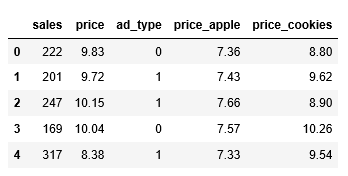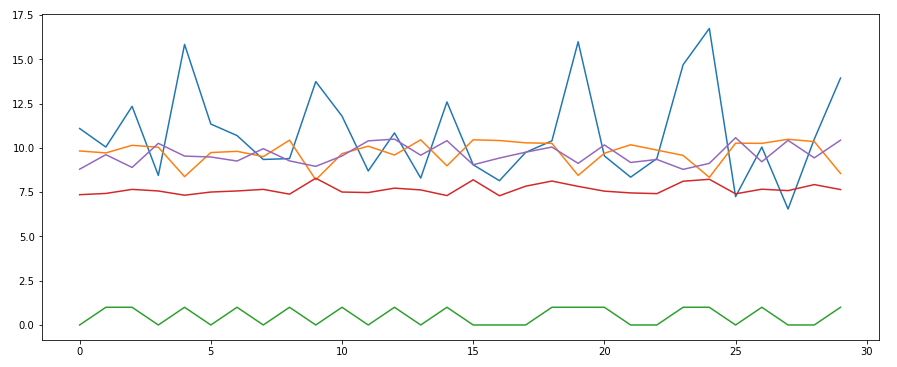Create a Python dashboard
We will use somewhat similar graphics and data derived from the same dataset as before to produce a dashboard based on Python coding.
How to do it...
We have the coding as follows.
We first load all the imports used. We also set up matplotlib to draw graphics inline in our Notebook. We also preconfigure the image sizes:
import pandas as pd import numpy as np import statsmodels.formula.api as sm import matplotlib.pylab as plt %matplotlib inline from matplotlib.pylab import rcParams rcParams['figure.figsize'] = 15, 6
We read in the data and display the first few records:
data = pd.read_csv("Documents/grapeJuice.csv")
data.head()The following is the output:

We scale down the sales figures as the other factors are much smaller. Then we produce a scatter plot of the set:
data["sales"] = data["sales"] / 20 plt.plot(data); #suppresses extraneous matplotlib messages
The following is the output:

Next, we produce a regression analysis on the data:
Y = data['sales'][:-1] X = data[['price...































































